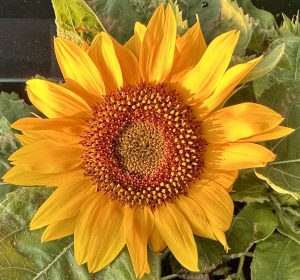Sunflowers are known for their stunning blooms and impressive height, making them a beloved symbol of summer and a must-have for any garden. This paper serves as a comprehensive guide to growing sunflowers, covering all the necessary steps from preparing the soil to harvesting the seeds, and offering valuable tips for optimal care and growth.
Helianthus annuus, more commonly known as sunflowers, are not only visually appealing but also have many practical uses. From adding a pop of color to your garden to providing nutritious seeds for snacking or bird feed, mastering the art of growing sunflowers can lead to a fruitful and fulfilling experience. This paper aims to equip both beginners and experienced gardeners with the knowledge and techniques needed to successfully cultivate these versatile plants.
Before getting your hands dirty, it’s crucial to select the right sunflower variety based on your preferences and intended use. With options ranging in size, color, and seed characteristics, you can choose from ornamental varieties for display, cut flowers, or seed production. Popular choices include ‘Giant Russian’, ‘Mammoth’, ‘Autumn Beauty’, and ‘Lemon Queen’, each offering unique features and growth habits.
Sunflowers thrive in well-drained, fertile soil with ample sunlight. Begin by choosing a sunny location with at least six to eight hours of direct sunlight per day. Loosen the soil to a depth of 12 to 18 inches and enrich it with organic matter, such as compost or aged manure, to improve its fertility and drainage. Avoid planting in compacted or waterlogged soil, which can hinder root growth and lead to unhealthy plants.
Sunflowers are typically grown from seeds, which can be sown directly into the ground after the threat of frost has passed. Plant the seeds 1 to 1.5 inches deep and space them 6 to 12 inches apart, depending on the variety’s mature size. After planting, water the soil thoroughly to ensure good seed-to-soil contact and encourage germination. For larger varieties, providing support, like stakes or trellises, can prevent the plants from toppling over in windy conditions.
Caring for Sunflowers:
Once your sunflowers have sprouted, proper care is essential for their growth and blooming. Here are some key tips:
Sunflowers need regular watering, especially during dry periods, to promote healthy growth and flowering. Water deeply at the base of the plants and avoid wetting the leaves to prevent fungal diseases. When the seedlings have established their second set of leaves, apply a balanced fertilizer, such as a 10-10-10 or 5-10-5 formulation. Follow the instructions on the package for the correct application rate and avoid over-fertilizing, which can lead to excessive foliage growth at the expense of flowers. Keep the area around your sunflowers free of weeds, which compete for nutrients, water, and sunlight. Mulching with organic materials, like straw or shredded leaves, can help suppress weeds and retain soil moisture. Monitor your sunflowers for common pests, such as aphids, caterpillars, and birds, and take appropriate measures to control infestations. Additionally, regularly check the plants for signs of diseases, such as powdery mildew or downy mildew, and promptly remove and dispose of any affected parts to prevent spread. The harvest is the most rewarding part of growing sunflowers. Wait until the back of the sunflower heads turns yellow or brown and the seeds develop a hard shell. Cut the flower heads, leaving a few inches of stem attached, and hang them upside down in a warm, dry place to dry for 1-2 weeks. Once dry, remove the seeds by rubbing or shaking the heads, and store them in a cool, dry place in airtight containers for later use.
Growing sunflowers is a fulfilling experience that rewards gardeners with stunning blooms, nutritious seeds, and a sense of accomplishment. By following the guidelines outlined in this paper, you can cultivate healthy sunflower plants from seed to harvest, creating beautiful displays and enjoying the benefits of homegrown produce. Whether you’re looking to add some beauty to your garden, use the seeds for cooking, or attract wildlife, sunflowers are sure to bring joy and brighten up any space.

